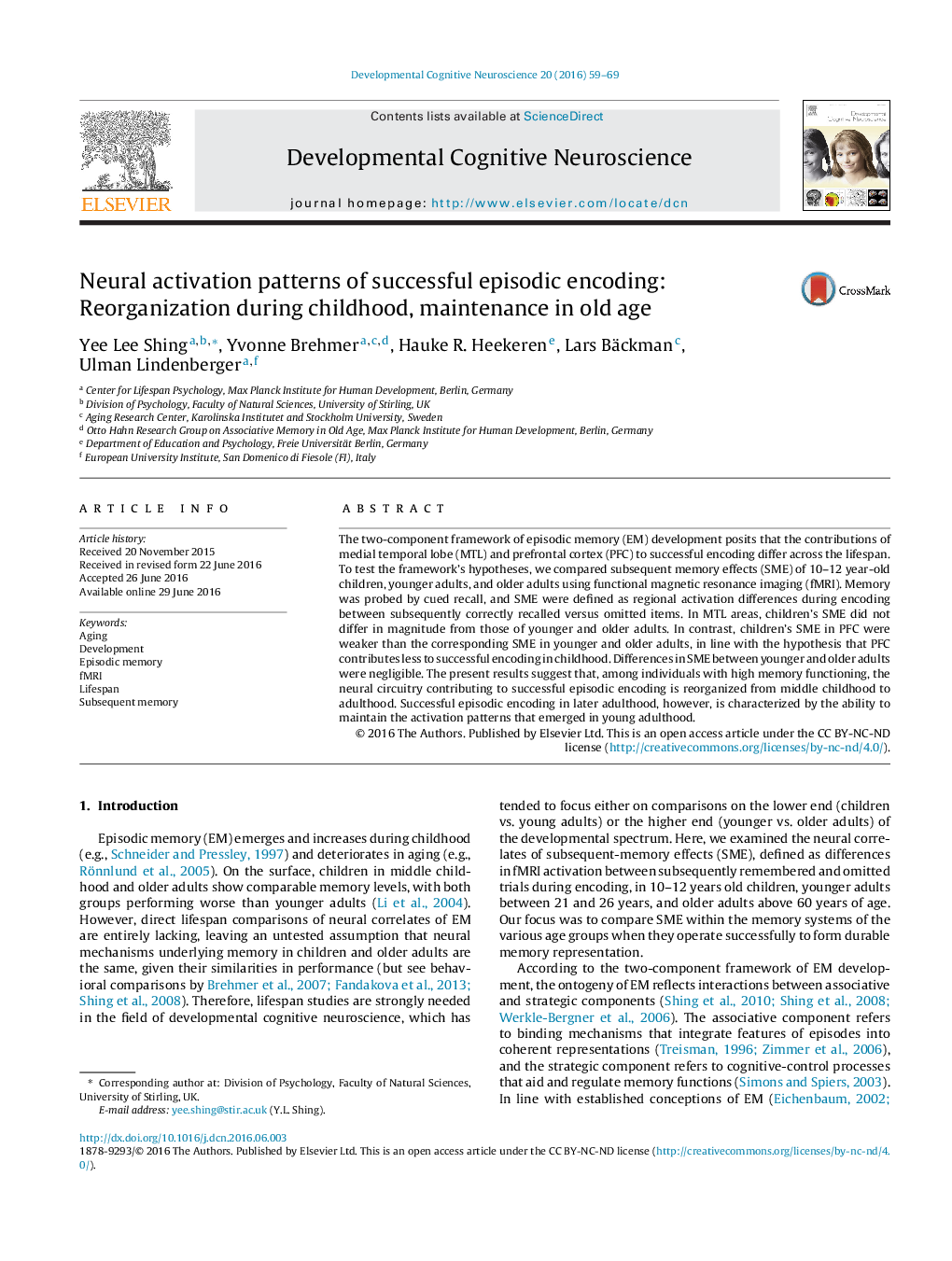| کد مقاله | کد نشریه | سال انتشار | مقاله انگلیسی | نسخه تمام متن |
|---|---|---|---|---|
| 4316422 | 1613103 | 2016 | 11 صفحه PDF | دانلود رایگان |
The two-component framework of episodic memory (EM) development posits that the contributions of medial temporal lobe (MTL) and prefrontal cortex (PFC) to successful encoding differ across the lifespan. To test the framework’s hypotheses, we compared subsequent memory effects (SME) of 10–12 year-old children, younger adults, and older adults using functional magnetic resonance imaging (fMRI). Memory was probed by cued recall, and SME were defined as regional activation differences during encoding between subsequently correctly recalled versus omitted items. In MTL areas, children’s SME did not differ in magnitude from those of younger and older adults. In contrast, children’s SME in PFC were weaker than the corresponding SME in younger and older adults, in line with the hypothesis that PFC contributes less to successful encoding in childhood. Differences in SME between younger and older adults were negligible. The present results suggest that, among individuals with high memory functioning, the neural circuitry contributing to successful episodic encoding is reorganized from middle childhood to adulthood. Successful episodic encoding in later adulthood, however, is characterized by the ability to maintain the activation patterns that emerged in young adulthood.
Journal: Developmental Cognitive Neuroscience - Volume 20, August 2016, Pages 59–69
